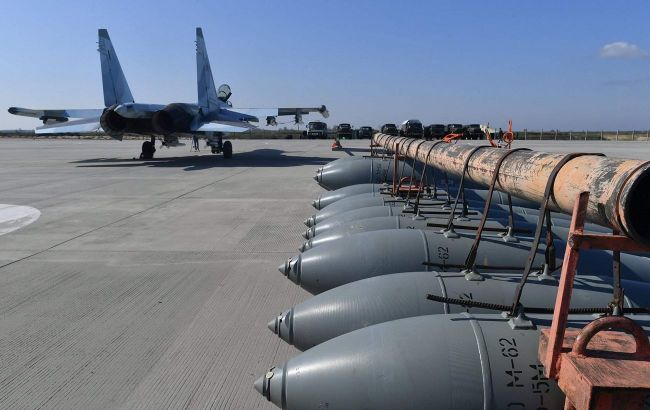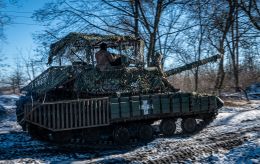Russia to start production of new air bombs for strikes on Ukraine - ISW
 Russia may establish the production of improved guided glide bombs UMPB D-30SN (photo from open sources)
Russia may establish the production of improved guided glide bombs UMPB D-30SN (photo from open sources)
Recently, Russian forces have been actively shelling frontline settlements with guided aerial bombs. Experts do not rule out the possibility that the aggressor may launch serial production of enhanced guided aerial bombs to expand their use across the front line in Ukraine, according to the Institute for the Study of War (ISW).
A spokesperson for the Tavria operational-strategic group of the Armed Forces of Ukraine, Captain Dmytro Lykhoviy, announced on March 10 that Russian forces had struck Myrnohrad in the Donetsk region with three Universal Multiservice Glide Bombs (UMGB) D-30SN.
The spokesperson stated that the advanced guided glide bombs UMGB D-30SN essentially transformed unguided gravity bombs FAB from Soviet times into guided glide bombs.
The report states that Russian forces had already used unguided glide bombs in January 2024.
Additionally, Russian military bloggers recently claimed that Russian forces in unspecified areas of Ukraine have begun to strike with unguided glide bombs FAB UMGB, in contrast to the use of unguided glide bombs with unified planning and correction modules.
The guided glide bombs UMGB have a guidance system that includes a jam-resistant GLONASS/GPS receiver Komet and complex wings similar to the Kh-101 cruise missile.
Bloggers noted that Russian forces could launch guided floating bombs UMGB from aircraft and ground-based multiple launch rocket systems (MLRS) Tornado-S and Smerch. Currently, Russian aviation launches UMGB without rocket engines, but in the future, the aggressor plans to use such bombs with rocket engines.
"Russian milbloggers claimed that UMGB guided glide bombs with a jet engine and fuel tank, currently absent from aerial glide bombs with UMPC, will allow Russian aviation to drop guided glide bombs from a lower altitude similar to air-to-surface cruise missiles and increase the maximum strike range to 80-90 kilometers," the report said.
It is noted that the increased flight range of guided glide bombs UMGB will allow Russian aviation to increase the depth of strikes on Ukrainian positions without the risk of detection or destruction by the Air Forces of the Armed Forces of Ukraine.
"Russian milbloggers claimed that the Russian defense industrial base (DIB) is attempting to mass-produce UMPB-guided glide bombs. Russian forces will likely attempt to serialize production of UMPB guided glide bombs and increase their use across the frontline," the report said.
Shelling with guided aerial bombs
During the night of March 10, the Russian military shelled Myrnohrad in the Donetsk region.
Initially, the Ukrainian Armed Forces reported shelling with S-300 surface-to-air missiles. However, it was later revealed that the aggressors used new glide bombs UMGB D-30SN for the shelling. These are old high-explosive aviation bombs transformed into guided aviation bombs with additional planning functions and additional propulsion units.
Additionally, the Ukrainian military recently practiced targeting enemy aircraft at a distance of over 150 kilometers. However, the results of this operation have not been reported.

